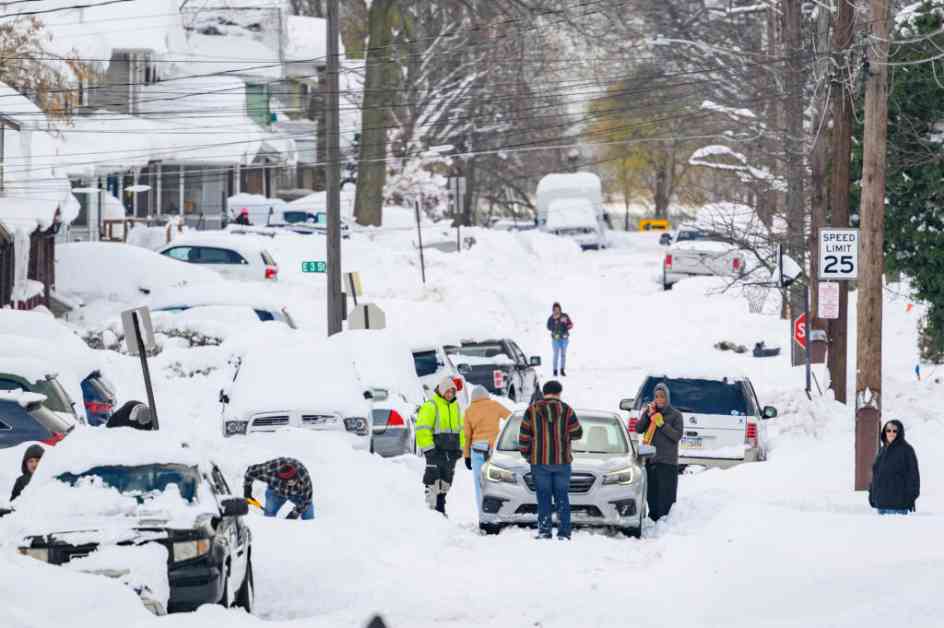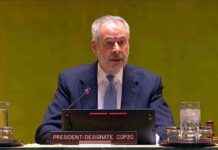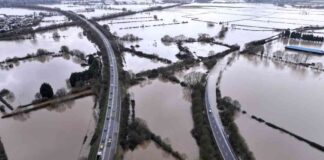In 2024, Pennsylvania faced a staggering number of billion-dollar weather disasters, totaling 12. This record-breaking year outpaced the state’s weather challenges throughout the entire 1980s, even when adjusted for inflation. Last week, a symposium convened at Drexel University in Philadelphia, drawing together representatives from various sectors to address a pressing concern for Pennsylvania and its neighboring states: How can we enhance preparedness for the escalating impact of severe weather events?
The urgency of the situation was underscored by Mathy Stanislaus, vice provost and executive director of Drexel’s Environmental Collaboratory, who highlighted the unprecedented heat records, increased hurricane frequency, and uncharacteristic tornado occurrences in the region. Regardless of personal beliefs about the root cause, the reality of these phenomena demands a proactive stance on preparedness.
Amidst the backdrop of recent calamities, including California’s devastating wildfires and swirling misinformation about disasters, concerns were raised about the potential consequences of reduced funding from the Federal Emergency Management Agency (FEMA). FEMA plays a critical role in supporting emergency preparedness grants and aiding in recovery efforts post-disaster. For instance, in 2022, FEMA allocated over $100 million to Pennsylvania residents affected by Hurricane Ida.
The looming threat of decreased federal investment in disaster response has spurred a call to action for state and local governments to step up their readiness efforts. Stanislaus emphasized the importance of preparedness as a foundational element in climate change discussions, labeling it as a crisis within the broader crisis. He stressed the need for comprehensive planning, training, and infrastructure development to mitigate the impact of extreme weather events.
While the White House and FEMA remained silent on the matter, the symposium attendees grappled with the implications of inadequate funding for disaster management. The event served as a platform for a diverse array of stakeholders, including policymakers, researchers, residents, and local officials, to engage in dialogue about effective preparation and recovery strategies in the aftermath of calamities.
Collaborative Efforts in the Face of Climate Challenges
Chitra Kumar, managing director of the climate and energy program at the Union of Concerned Scientists, commended the collaborative spirit exhibited at the symposium, contrasting it with the discordant political rhetoric from Washington, D.C. She highlighted the worsening climate impacts and the vital need for cross-sectoral cooperation to address the growing environmental challenges.
Dr. Elizabeth Cerceo, the director of climate health at Rowan University’s Cooper Medical School, emphasized the importance of breaking down silos and leveraging all available resources to tackle public health crises exacerbated by climate change. The discussions at the event centered on the often-overlooked threat of heat waves, particularly in the Mid-Atlantic region, which pose significant risks to vulnerable populations.
Humanizing Disaster Preparedness
Dr. Alan Greenglass, a retired physician advocating for increased awareness of climate-induced health risks, drew attention to the profound impacts of heat waves on public health and productivity. He stressed the importance of education, early warning systems, and responsive emergency protocols in saving lives during extreme weather events.
Maria Cabrera, a city councilwoman from Wilmington, Delaware, underscored the necessity of inclusive and culturally sensitive communication strategies for disaster preparedness, particularly for underserved communities. She raised concerns about undocumented individuals avoiding assistance during emergencies due to fears of government repercussions, highlighting the need for tailored outreach efforts.
As the symposium concluded, the prevailing sentiment was one of shared responsibility and proactive engagement in the face of mounting climate challenges. Despite the adversarial climate policies at the federal level, the commitment to collaborative action and community resilience remained unwavering among the participants.
Every aspect of this critical discourse underscored the imperative for coordinated efforts, innovative solutions, and inclusive strategies to confront the escalating threats posed by climate change. The symposium at Drexel University served as a beacon of hope amid the storm of climate crisis, highlighting the power of unity and preparedness in safeguarding our communities and environment.
Donations from readers like you fund every aspect of what we do. If you don’t already, will you support our ongoing work, our reporting on the biggest crisis facing our planet, and help us reach even more readers in more places? Please take a moment to make a tax-deductible donation. Every one of them makes a difference. Thank you.
Kiley Bense, Reporter, Pennsylvania














